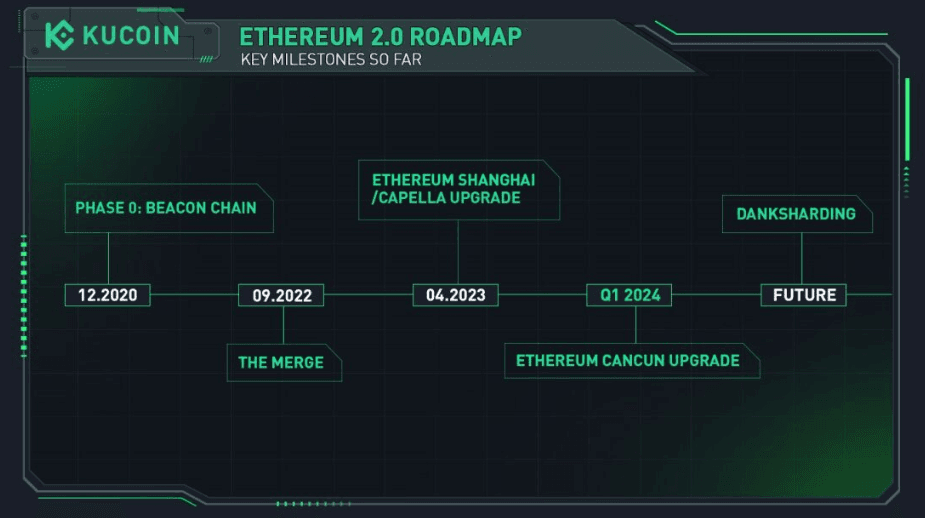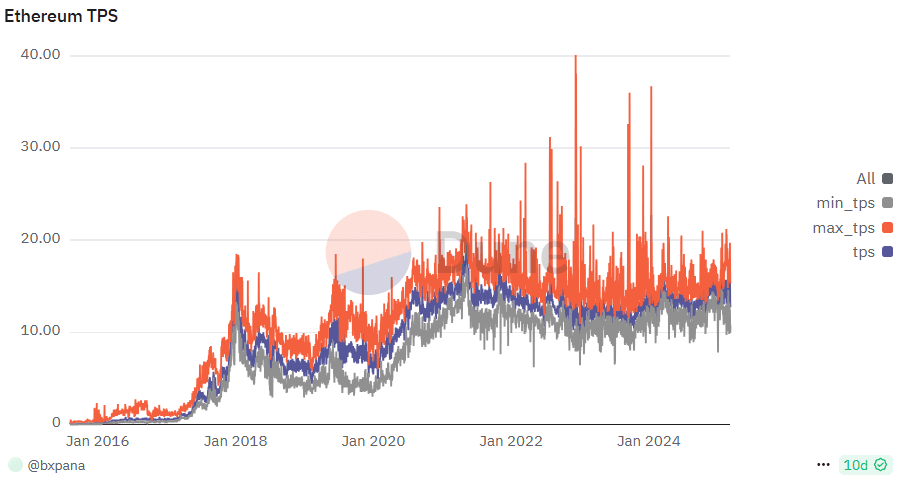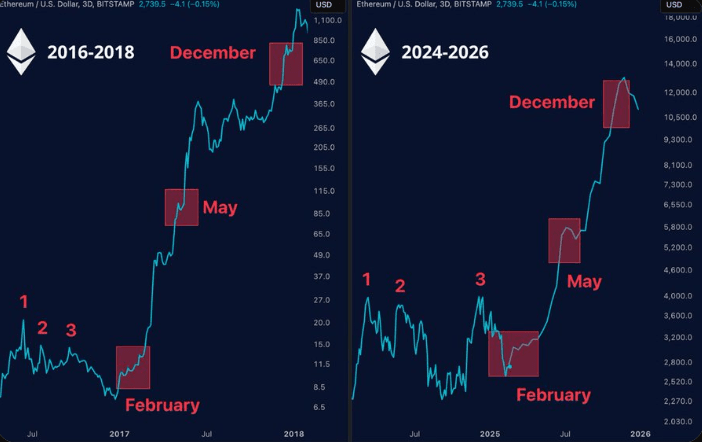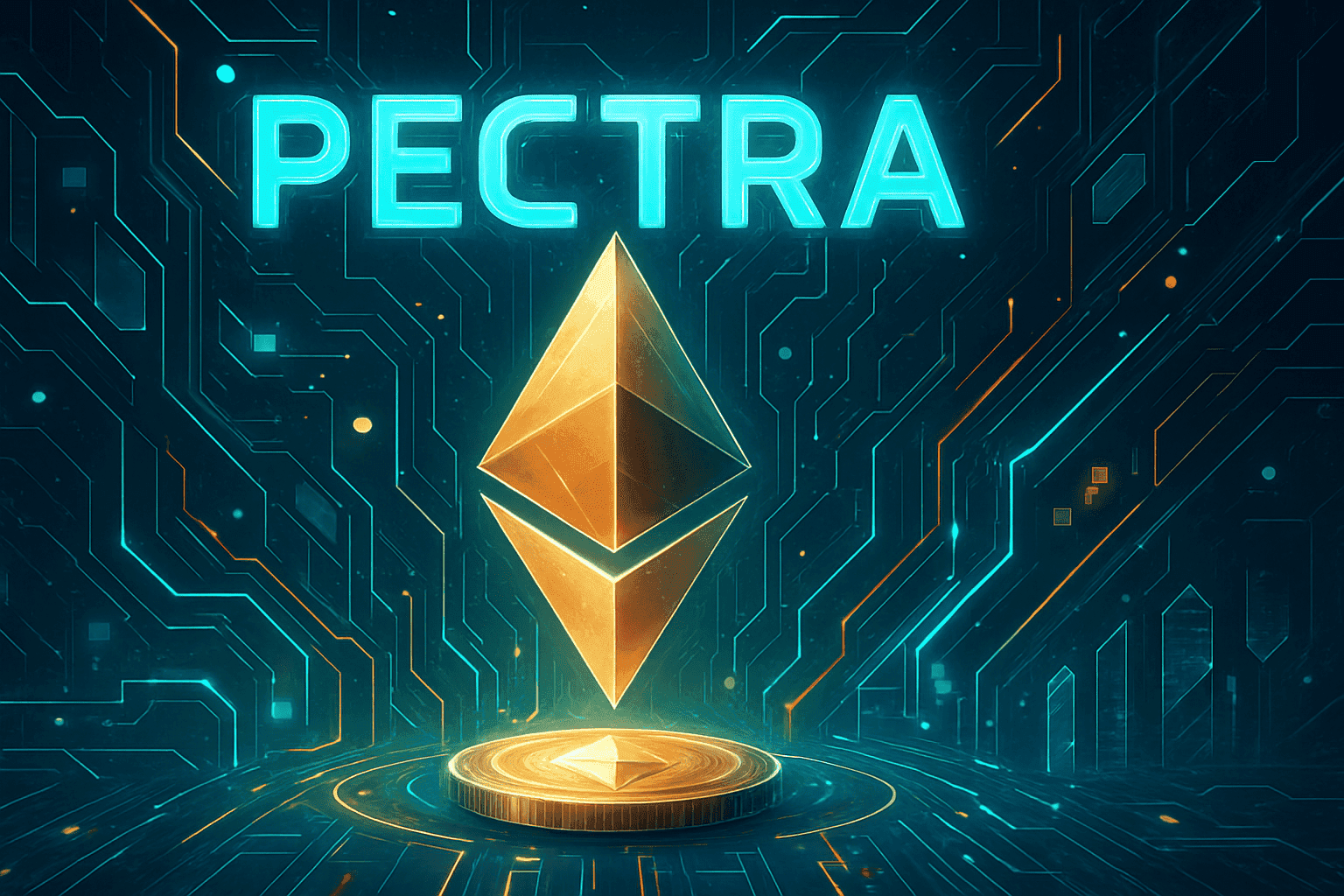The ETH Pectra upgrade is the next major evolution of the Ethereum network, designed to transform both the user experience and operational efficiency of the platform.
Discover Pectra: The Innovation Revolutionizing Ethereum
Can you imagine paying gas fees with tokens other than ETH, enjoying faster transactions and seeing the staking process optimized? That's precisely what the Pectra upgrade promises. This upgrade is not just a technical update, but a comprehensive transformation that targets:
- Account abstraction: allowing transactions to be paid with multiple tokens such as USDC or DAI, enabling third-party fee sponsorship and simplifying the payment process.
- Smart contract optimization: Through enhancements such as EIP-7692, the efficiency of the Ethereum Virtual Machine (EVM) is refined, making contracts faster and cheaper.
- Validator upgrades: Proposals such as EIP-7002 and EIP-7251 facilitate flexible withdrawals and increase the staking limit from 32 ETH to 2,048 ETH, improving the operational capacity of validators.
- Improvements in data storage: With innovations such as Verkle Trees and PeerDAS, the upgrade reduces storage requirements and improves transaction processing capacity, which in turn eases network congestion.
When will the Ethereum Pectra upgrade take place?
The Pectra upgrade is planned to be implemented in two phases.
- Phase 1 (mid-March 2025):
Key enhancements will be introduced, such as doubling the capacity of blobs at layer 2 (from three to six) and enabling account abstraction.
Increasing the staking limit for validators from 32 to 2,048 ETH will be implemented.
- Phase 2 (late 2025 or early 2026):
Advanced optimizations will be deployed, including data management improvements with PeerDAS and implementation of Verkle Trees for more efficient storage.
It is worth mentioning that the Dencun upgrade, which introduced proto-danksharding, was released on March 13, 2024, laying the groundwork for Pectra. If the test on test networks (such as Holesky and Sepolia) proves successful, the activation date on the main network will be defined.


How does the Pectra Upgrade work?
Pectra integrates a series of Ethereum Improvement Proposals (EIPs) to address critical areas of the network. These EIPs are the core of the transformation and each brings specific improvements:
Account Abstraction (EIP-7702).
What does it do?
Allows Ethereum accounts to transact in a bundled manner and pay gas fees using alternative tokens, such as USDC or DAI, instead of ETH.
Benefits:
- Simplifies the user experience.
- Eliminates the need to hold ETH just to pay fees.
- Facilitates integration of rate sponsorship services, reducing or eliminating costs for some users.
Validator Upgrades
EIP-7251 and EIP-7002:
- EIP-7251: Increases the staking limit per validator from 32 ETH to 2,048 ETH. This allows validators to consolidate their operations on a single node, reducing congestion and improving network efficiency.
- EIP-7002: Facilitates flexible staking withdrawals, allowing validators to partially or fully withdraw their staked ETH in a more agile manner.
Staking impact:
- Greater control and liquidity for stakers.
- Incentives for large investors and institutions, as it simplifies the management of large volumes of ETH in staking.
Scalability and Storage Enhancements
Verkle Trees:
This revolutionary data structure reduces storage requirements, allowing the network to process more transactions without overloading the chain.
PeerDAS:
Optimizes the scalability of Layer 2 solutions, decreasing network congestion and improving data handling efficiency.
EIP-7742 and other proposals:
Increase the capacity of blobs and reduce rates, doubling processing capacity in certain areas of the network.
Efficiency in Smart Contracts (EIP-7692)
Objective:
To update the Ethereum Virtual Machine (EVM) object format to make the implementation of smart contracts simpler and less expensive.
Advantages:
- Faster and cheaper dApps development.
- Improved experience for programmers and end users.
How will the Pectra update affect users?
Pectra promises to bring significant improvements that will benefit both ordinary users as well as developers and validators. Here are some of the key areas of impact:
Reduced Rates and Increased Accessibility.
- Flexible Gas Payments:
Thanks to account abstraction, users will be able to pay gas tariffs with stablecoins such as DAI or USDC, which can translate into lower or even zero tariffs in certain cases.
- Batch Processing:
The ability to bundle multiple transactions into a single transaction helps reduce costs and optimize efficiency, allowing users to perform more transactions with less expense.
Security Enhancements and Portfolio Recovery.
- Social Recovery:
Pectra incorporates new key recovery options, allowing trusted contacts to help restore access in the event of loss.
- Native Multisig Wallets:
These wallets require multiple approvals to execute a transaction, increasing security against unauthorized access.
Impact on ETH Staking
- Increased Capacity for Validators:
Increasing the staking limit from 32 to 2,048 ETH allows validators to manage larger volumes of ETH, which optimizes incentive distribution and improves overall network efficiency.
- Flexibility in Withdrawals:
The improved withdrawal process makes staking more accessible and attractive to a wider range of users, including both large investors and individual stakers.
What is the new Pectra update going to bring to the Ethereum network?
The Pectra update brings with it a number of innovations that translate into tangible benefits for the network:
Technical and Operational Innovations.
1. Account Abstraction:
- Enables the use of multiple tokens for gas payments.
- It facilitates grouped transactions and reduces costs for the user.
2. Expanded Blobs Capacity:
Doubling the blob capacity at layer 2 will allow more data to be processed per block, reducing congestion and transaction costs.
3. Increased Flexibility for Validators:
Increased staking limit and improvements in withdrawals will make staking more efficient and cost-effective.
4. Smart Contract Optimization:
With EIP-7692, developers will be able to create and deploy smart contracts faster and more cost-effectively.
5. Storage Efficiency and Scalability:
The use of Verkle Trees and PeerDAS will enable better data management, facilitating scalability and reducing storage cost.
Benefits for the Ecosystem and Developers
- Ease of Use and Increased Accessibility:
The implementation of new features in wallets will improve the user experience, making Ethereum more user-friendly for those new to crypto.
- Fostering Innovation:
With lower transaction costs and increased operational capacity, it will open the door to new decentralized applications (dApps) and innovative projects that will leverage the network.
- Improved Overall Performance:
Improved operational efficiency and scalability will allow Ethereum to continue to compete in an ever-evolving market, cementing its position as the world's most valuable blockchain network.



Authority and Credibility in Pectra Analytics.
Cryptocurrency experts such as Joseph Lubin and influential figures in the community have commented on the importance of this update. Pectra is expected to mark a milestone in the evolution of Ethereum, significantly improving the staking efficiency and usability of the network. These improvements position Ethereum to continue to lead the market in an increasingly competitive environment, where networks such as Solana and XRP are gaining ground.
Improvements in scalability and staking efficiency are crucial to maintaining Ethereum's competitiveness, especially in a context where innovation is the main driver of growth in the crypto ecosystem.
The Pectra upgrade is a key piece in Ethereum's evolutionary process. With improvements ranging from fee reduction and smart contract optimization to expanded staking capabilities and improved scalability, Pectra is shaping up to be a transformative upgrade.
For users, this means cheaper transactions, enhanced wallet security and a friendlier environment for interacting with decentralized applications. For validators and developers, the upgrade opens up new opportunities for efficiency and enables the development of even more ambitious projects in the blockchain space.
The implementation of Pectra, divided into two phases and scheduled for mid-2025, will lay the groundwork for the next generation of innovations in Ethereum, preparing it for future challenges and cementing it as the leading platform in the crypto ecosystem.
